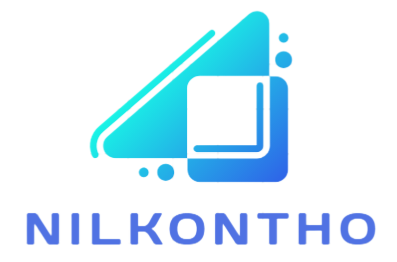The energy landscape in the United States is a complex, multifaceted arena that has undergone substantial changes over the past decades. Power companies, entities at the heart of this landscape, operate within a market that balances consumer demands, regulatory changes, technological innovations, and environmental considerations. These companies are pivotal in shaping America’s energy future, continually adapting to the economic, ecological, and technological transformations reshaping the industry.
Market Structure and Key Players:
The U.S. electric power industry is a vast network comprising thousands of firms, including investor-owned utilities, independent power producers, and government-owned entities. Historically, power companies in the U.S. operated as regulated monopolies, with exclusive rights to provide electricity in their service areas. Regulations were strict, ensuring they did not abuse their monopoly power while guaranteeing them a reasonable return on their investments in power infrastructures.
Investor-owned utilities (IOUs) are the most prevalent entities, both in terms of customer service and revenue generation. Giants like Duke Energy, Southern Company, and Dominion Energy fall into this category, serving millions of customers and investing heavily in diverse energy portfolios. These companies are publicly traded, owned by shareholders, and regulated by state public utility commissions.
Alternatively, public power utilities, including municipal utilities and cooperatives, are community-owned, emphasizing public service over profit. They reinvest earnings into infrastructure or community projects, often resulting in lower rates and more direct accountability.
Moreover, the Federal government operates significant power enterprises like the Tennessee Valley Authority and the Bonneville Power Administration. These entities contribute to key policy initiatives, regional development goals, and stabilize electricity prices in their operating regions.
Transformation and Challenges:
The industry’s traditional model, relying heavily on large-scale, centralized power plants, has been disrupted by several factors. First, the rise of renewable energy, driven by concerns over climate change and facilitated by technological advances and government subsidies, has altered investment patterns and operational strategies. Power companies are now compelled to diversify, evidenced by the significant investments in wind, solar, and other renewable energy projects.
However, the integration of these renewable sources poses grid reliability and stability challenges. The intermittent nature of solar and wind energy requires substantial backup provisions, often provided by natural gas plants, large-scale batteries, or other storage solutions, demanding further investments and operational adjustments.
Simultaneously, regulatory and policy challenges abound. The push for decarbonization, evident in policies like the Clean Power Plan and various state-level renewable portfolio standards, requires a strategic rethinking of the traditional energy mix, leaning towards cleaner, more sustainable solutions. This shift, while environmentally commendable, imposes financial and operational burdens on power companies, especially those heavily invested in fossil fuels.
Technological Disruption:
Furthermore, technological innovations are redefining the industry’s operational context. The growth of distributed energy resources (DERs), like rooftop solar, has introduced a prosumer culture, where consumers are also producers—selling power back to the grid. This not only affects utility revenue streams but also complicates grid management, necessitating more flexible and intelligent systems.
Smart grid technologies, emphasizing digital communications tech, IoT, and real-time control systems, are being integrated to enhance grid reliability, resilience, and efficiency. These technologies facilitate the shift towards a more decentralized, customer-centric energy model, although they also represent substantial upfront investment costs and cybersecurity risks.
Economic and Pandemic Pressures:
The U.S. power sector hasn’t escaped the economic pressures felt by industries worldwide, further complicated by the COVID-19 pandemic. The health crisis caused industrial shutdowns and reduced electricity demand, straining utility finances. It also accelerated trends like remote working, potentially reshaping future energy consumption patterns and expectations regarding residential energy supply reliability and resilience.
Moreover, the pandemic underscored the importance of crisis-ready infrastructure, pushing utilities to increase investment in grid hardening, energy storage, and advanced grid monitoring technologies to ensure uninterrupted service during unforeseen global events.
Future Outlook:
As the industry navigates these myriad challenges, the future for power companies in the U.S. hinges on several key focus areas. The transition to a sustainable energy system is paramount, necessitating continued investment in renewable generation, grid modernization, and energy storage solutions.
Equally critical is the digital transformation of the grid, incorporating advanced data analytics, artificial intelligence, and increased connectivity to optimize everything from demand response to asset management and customer service. This digital evolution, however, must be tempered with robust cybersecurity strategies, protecting the grid from increasing cyber threats.
Additionally, power companies must navigate the delicate balance of upgrading aging infrastructure while keeping electricity affordable for consumers. Strategic partnerships, both public and private, and regulatory collaboration will be vital in addressing investment requirements, minimizing disruptions, and ensuring an equitable energy transition.
Power companies in the United States are at an inflection point, faced with a transition toward a more sustainable, resilient, and customer-focused industry. The road ahead is fraught with challenges, from integrating renewable energy and modernizing grids to navigating a dynamic regulatory environment and shifting consumer expectations. However, these challenges also present opportunities for innovation, collaboration, and the reimagining of the U.S. energy landscape in a manner that prioritizes sustainability, efficiency, and preparedness for future crises. How power companies manage this delicate balancing act will be instrumental in shaping the nation’s energy future.
